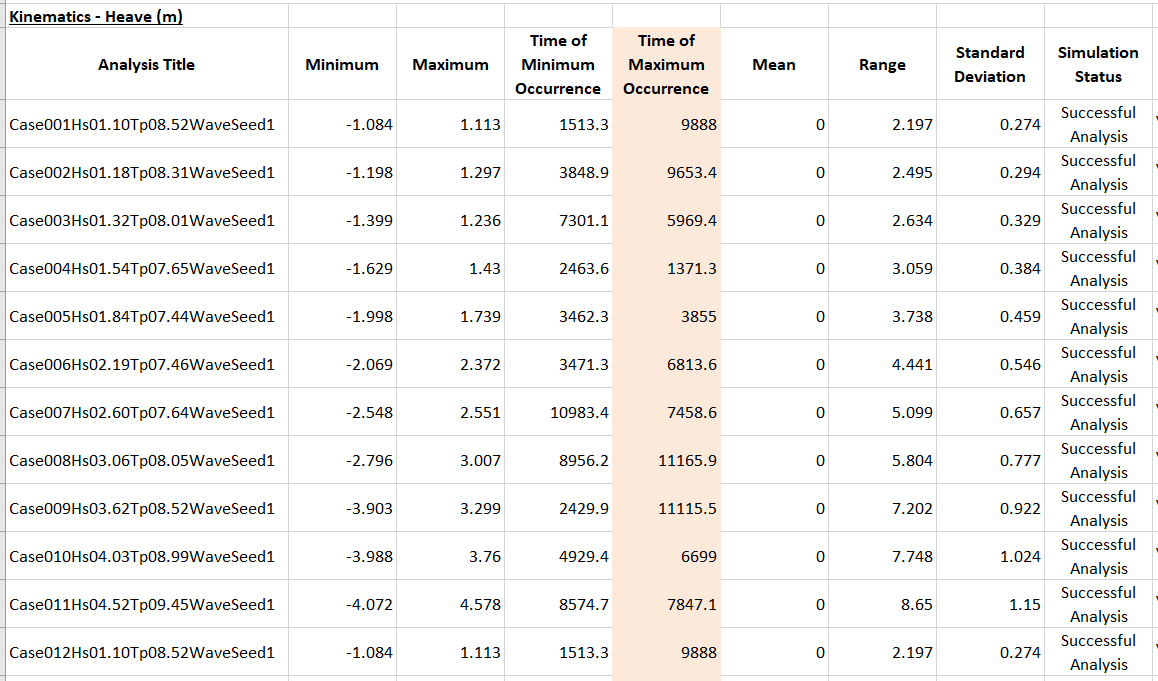Design load cases are analysed in Flexcom using simulations of 10-minute (600 second) duration. An additional 5-minutes (300 seconds) is included at the beginning to accommodate initial transients. For each seastate, a screening test is performed in advance of the main simulation, from which the peak wave occurring over a 3-hour storm is identified and noted. The start time for each design simulation is set equal to the peak wave time minus 5 minutes. This ensures that the largest wave for each wind condition is experienced by the system.
A simple 1-element model is used to identify the occurrence of the largest wave in a 3-hour simulation. The element is rigid and massless and is attached to a vessel which has a notional heave RAO of 1.0m/m and a phase angle of zero. This means that the element rides the wave regardless of wave frequency or amplitude. RAOs in all other degrees of freedom are set to zero. The model is analysed using a series of random sea analyses, with Hs and Tp in each simulation corresponding to the values outlined in the Design Load Case Specification. Summary postprocessing is used to retrieve the maximum vessel heave in each simulation, which is equal to the maximum wave height, and this information is gathered by the summary collation feature. The resulting Excel file contains the peak wave time for all design load cases (see below), and this is neatly slotted into the main DLC spreadsheet which acts as a template to generate the keyword files to support the Design Load Case assessment.

Wave Peak Times for Design Load Cases